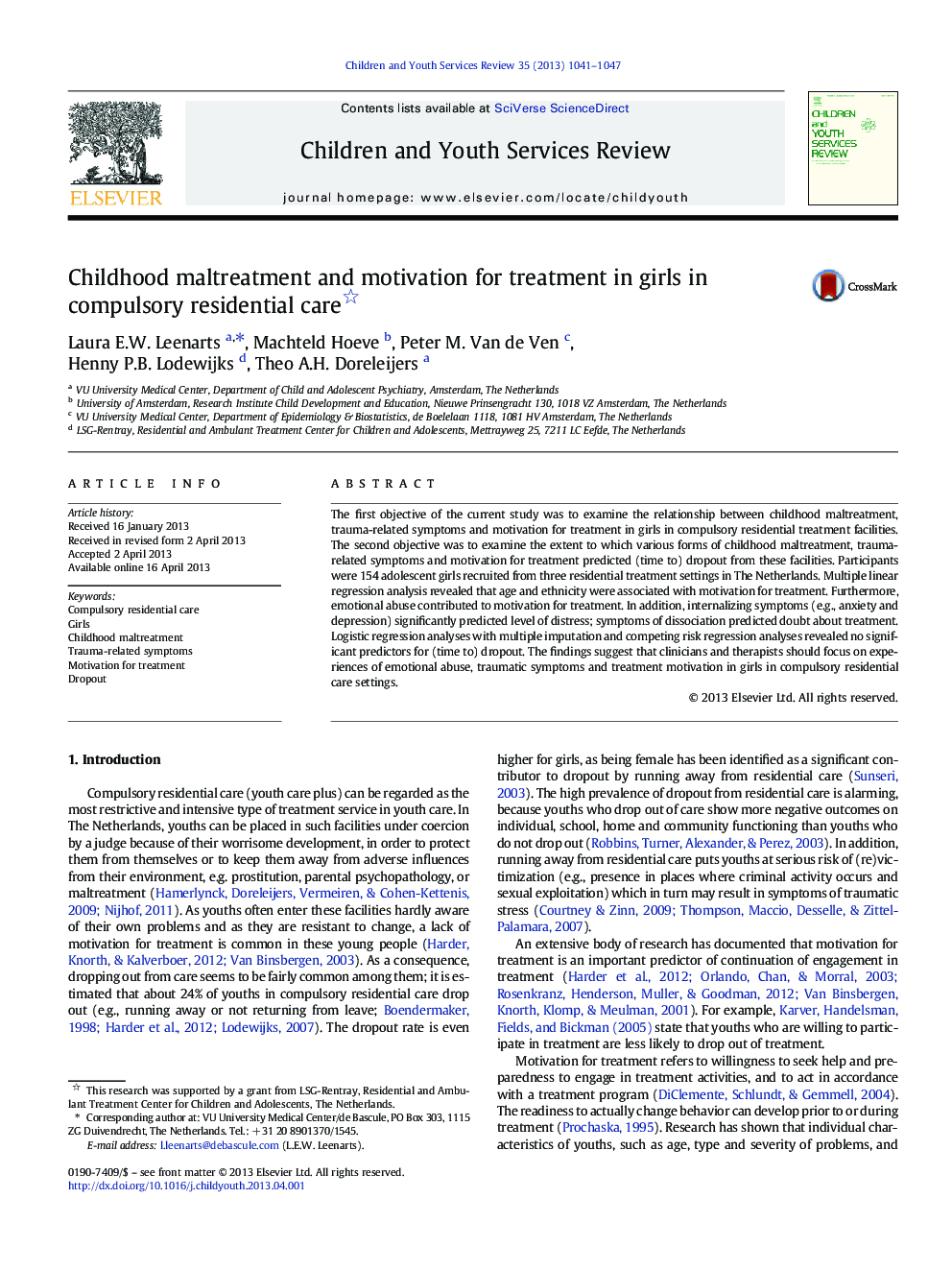| Article ID | Journal | Published Year | Pages | File Type |
|---|---|---|---|---|
| 10311667 | Children and Youth Services Review | 2013 | 7 Pages |
Abstract
The first objective of the current study was to examine the relationship between childhood maltreatment, trauma-related symptoms and motivation for treatment in girls in compulsory residential treatment facilities. The second objective was to examine the extent to which various forms of childhood maltreatment, trauma-related symptoms and motivation for treatment predicted (time to) dropout from these facilities. Participants were 154 adolescent girls recruited from three residential treatment settings in The Netherlands. Multiple linear regression analysis revealed that age and ethnicity were associated with motivation for treatment. Furthermore, emotional abuse contributed to motivation for treatment. In addition, internalizing symptoms (e.g., anxiety and depression) significantly predicted level of distress; symptoms of dissociation predicted doubt about treatment. Logistic regression analyses with multiple imputation and competing risk regression analyses revealed no significant predictors for (time to) dropout. The findings suggest that clinicians and therapists should focus on experiences of emotional abuse, traumatic symptoms and treatment motivation in girls in compulsory residential care settings.
Related Topics
Health Sciences
Medicine and Dentistry
Perinatology, Pediatrics and Child Health
Authors
Laura E.W. Leenarts, Machteld Hoeve, Peter M. Van de Ven, Henny P.B. Lodewijks, Theo A.H. Doreleijers,
